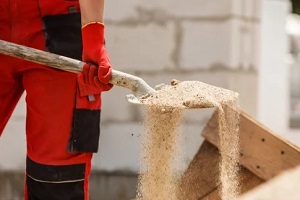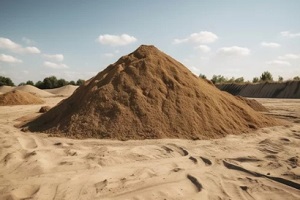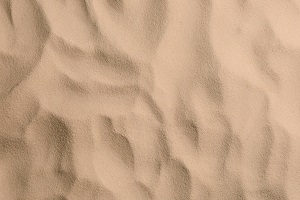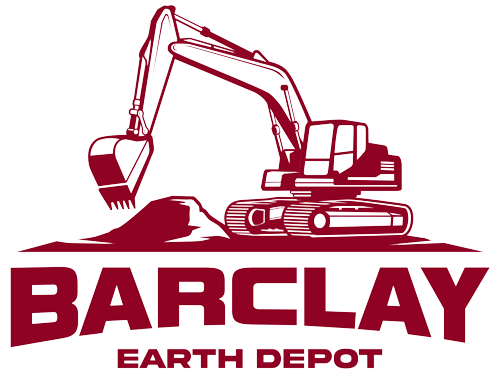 Sand is one of the most important materials used in construction today. As a major component of concrete, mortar, and other building materials, having construction sand with the optimal grain size is essential to achieving the right balance of properties in these mixes.
Sand is one of the most important materials used in construction today. As a major component of concrete, mortar, and other building materials, having construction sand with the optimal grain size is essential to achieving the right balance of properties in these mixes.
But what exactly is the ideal size of sand grains for construction applications? This article will explore the different sand sizes used in construction and the factors that determine which size works best.
Types of Construction Sand Based on Size
Construction sands are categorized by grain size, ranging from fine sands with the smallest grains through medium sands up to coarse sands with the largest particles. The specific size ranges according to the Bureau of Indian Standards are:
Fine Sand
Particles range from 0.075mm to 0.425mm in size. This is the finest type of construction sand. It almost feels akin to flour or powder when rubbed between your fingers. Fine sand is used for plastering and as an ingredient in mortar mixes where smooth finishes are required. The tiny grains help fill microscopic voids.
Medium Sand
With particles measuring 0.425mm to 2mm, medium sand is coarser than fine sand but more finely grained than coarse sand. It has a gritty texture you can feel. Medium sand is commonly used for brickwork, blockwork, and general building work. The particle sizes provide good workability.
Coarse Sand
The largest sand grains used in construction range from 2mm up to 4.75mm. This coarser sand is used to make concrete mixes and bedding pipes and drains. The rough texture and large particles make it useful for traction on surfaces. Angular grains improve strength.
The size, texture, angularity, and composition of sand particles affect how the sand performs in different construction applications. Finer sands with more rounded grains tend to be used for plastering, while coarser sand is needed for strength in concrete.
Factors Affecting Optimal Construction Sand Size
When selecting the suitable sand for your construction project, determining whether fine, medium, or coarse sand is best depends on carefully analyzing a few key factors that impact the properties and performance of the sand.
Strength
Finer sand grains provide greater contact area in a mix, resulting in improved binding strength compared to large particles. The increased surface area improves bonding. Concrete made with fine sand is typically stronger than concrete with coarse sand.
Workability
Coarser sands improve the workability of fresh concrete before it sets. The large particles make the mix easier to place and finish. Fine sands can reduce workability due to the increased surface area. Medium sands offer a balance.
improve the workability of fresh concrete before it sets. The large particles make the mix easier to place and finish. Fine sands can reduce workability due to the increased surface area. Medium sands offer a balance.
Porosity
Smaller sand particles fill gaps more effectively, reducing the porosity and permeability of materials such as concrete. Low porosity improves durability and protects against water infiltration. Fine sand is best for minimizing voids.
Durability
Finer sands also increase the density of concrete and mortar when packed between the aggregate pieces. Higher density makes these materials more impermeable and durable. Fine sand improves density.
Availability and Cost
Locally available sand sizes heavily influence the optimal choice. Imported specialty sands can significantly increase project costs. Using locally sourced sand is the most economical.
While fine sands offer increased strength and durability, they may not be readily available in all regions. Site conditions, local geology, transportation costs, and other factors mean the ideal sand size is often based on practicality. Testing sand quality is essential.
Best Sand Size for Construction Applications
When selecting the optimal sand size for a particular construction application, you must carefully match the sand grain size to the specific use, as the type of project determines the ideal grading for strengths, workability, and finishes.
- Concrete: General-purpose concrete mixes require sand ranging from 0.15mm to 4.75mm. However, a 0.6mm grain size is typically recommended to balance workability and strength. Angular sand improves binding.
- Mortar: Mortar for bricklaying and plastering works best with sand sizes between 0.075mm and 4.75mm. 0.6mm is often cited as ideal. Smooth, rounded grains enhance workability.
- Plaster: Finer sands no larger than 1.18mm are preferred to achieve smooth finishes for interior plastering. Masonry plasters can use up to 4.75mm. Fine sand finishes most smoothly.
- Brick/block work: Sand for bricklaying and blockwork requires coarser grains ranging from 0.425mm to 2mm in size. This improves workability. Avoid very fine sand.
- General: For general construction applications, sand with grain sizes between 0.425mm and 2mm works well in most cases. This medium sand is widely available.
While 0.6mm grain size seems optimal for strength and durability, the 0.425mm to 2mm range covers medium and some coarse sands, offering a practical balance. Local availability also means construction sand within this range is accessible.
Compared to very fine sands, the coarser particles reduce shrinkage cracks in products and improve workability. For general construction tasks from concrete to mortar, a sand grain size of 0.425mm to 2mm is suitable in many situations.
Consult with Barclay Earth Depot for Optimal Construction Sand Choices
 For most construction jobs, a medium 0.425-2mm sand is a good way to go. It gives you the right combo of strength and workability. The grains are small enough to stick together but big enough to let the concrete or mortar flow and set up nicely. And since it’s easy to find, this versatile sand works for all kinds of projects, from homes to commercial buildings.
For most construction jobs, a medium 0.425-2mm sand is a good way to go. It gives you the right combo of strength and workability. The grains are small enough to stick together but big enough to let the concrete or mortar flow and set up nicely. And since it’s easy to find, this versatile sand works for all kinds of projects, from homes to commercial buildings.
But some unique projects need a closer look to pick the perfect sand. With years of hands-on experience, Barclay Earth Depot is happy to review your plans and needs. We’ll work with you to find the ideal type and size of sand for your specific goals.
Our expertise means you get sand that’s not only suitable but also economical. Contact us today at 941.841.1681 or online to chat about choosing the suitable construction sand for your upcoming build.

